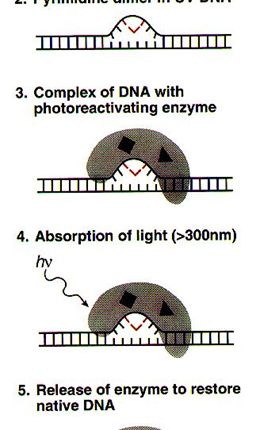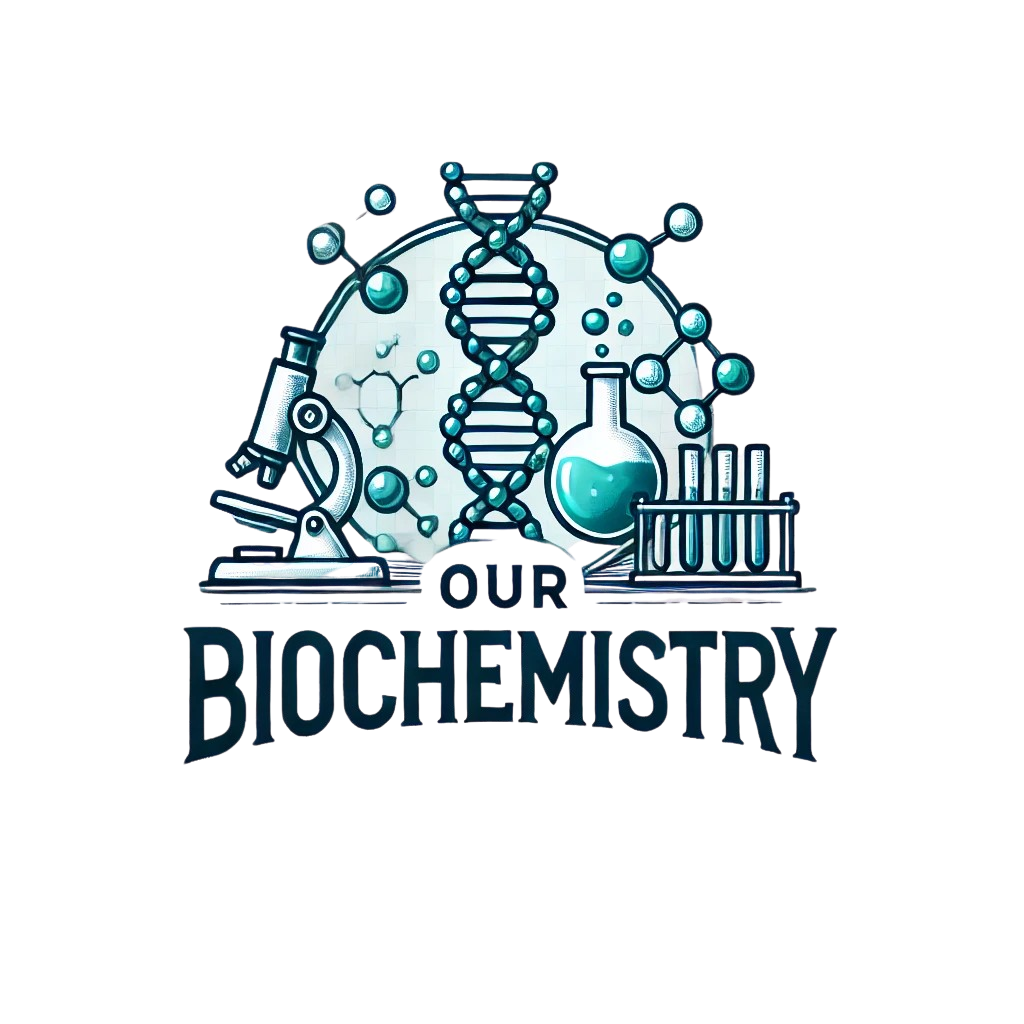Library
DNA Damage: Causes, Types, and Effective Repair Mechanisms
- December 2, 2019
- Posted by: Namrata Chhabra
- Category: Library Learning resources Lecture notes Molecular Biology Molecular Biology USMLE Content

The fidelity of replication is very high, with an overall error rate of 10-9 to 10-10. Insertion of an inappropriate nucleotide that occurs during replication can be corrected by editing during the replication process. This proofreading function is performed by a 3′-5′ exonuclease activity associated with the polymerase complex. The post-replication repair process also increases the fidelity of replication.
Which “one” of the following is not a post-replication DNA repair mechanism?
A. 5′-3- Exonuclease repair
B. Base excision repair
C. Mismatch repair
D. Nucleotide excision repair
E. Direct repair
The correct answer is- A – 5′-3- Exonuclease repair. It is an editing function of DNA polymerase during the replication process. The processes involved in DNA repair during the post-replication phase include the following:
A) Direct Damage reversal
B) Excision of DNA damage
A) Direct Damage Reversal
The direct reversal of DNA damage is by far the simplest repair mechanism that involves a single polypeptide chain, with enzymatic properties that binds to the damage and restores the DNA genome to its normal state in a single reaction step.
For example, DNA photolyases are enzymes responsible for removing cyclobutane pyrimidine dimers from DNA in a light-dependent process called photoreactivation (Figure 1).

Figure-1-Mechanism of direct DNA damage repair using photolyases (Picture adapted from Nelson, D. L., Cox, M. M., & Hoskins, A. A. (2021). Lehninger Principles of Biochemistry (8th ed.). W.H. Freeman.)
B) Excision of DNA damage – includes
a) Base excision repair (BER)
b) Nucleotide excision repair (NER),
c) Mismatch repair (MMR) and
d) Strand break repairs.
In these reactions, a nucleotide segment containing base damage, double-helix distortion or mispaired bases is replaced by the normal nucleotide sequence in a new DNA polymerase synthesis process.
i) Base excision repair (BER) – Figure-2
BER is initiated by DNA glycosylases, which catalyze the hydrolysis of the N-glycosidic bonds, linking particular types of chemically altered bases to the deoxyribose-phosphate backbone. Thus, DNA damage is excised as free bases, generating sites of base loss called apurinic or apyrimidinic (AP) sites. The AP sites are substrates for AP endonucleases (Figure 2). These enzymes produce incisions in duplex DNA as a result of the hydrolysis of a phosphodiester bond immediately 5′ or 3′ to each AP site. The ribose-phosphate backbone is then removed from the DNA through the action of a specific exonuclease called deoxyribo phosphodiesterase or dRpase. Finally, the DNA polymerase and a ligase catalyze the incorporation of a specific deoxyribonucleotide into the repaired site, enabling correct base pairing (Figure 2).

Figure 2- Mechanism of the basic excision repair system (picture adapted from Nelson, D. L., Cox, M. M., & Hoskins, A. A. (2021). Lehninger Principles of Biochemistry (8th ed.). W.H. Freeman)
ii) Nucleotide excision repair (NER)
Several types of agents generate bulky base adducts in DNA, leading to a significant distortion of the DNA helix. The most widely studied of these DNA damaging agents is UV radiation, responsible for thymine dimers, which produce a bend of ~30° in the DNA. Some chemical agents form DNA cross-links, which are particularly hazardous. These cross-links produce conformational distortions in DNA; they are substrates for DNA endonucleases that make an incision in DNA, several nucleotides to each side of the damage, generating a potential oligonucleotide fragment. Subsequent helicase reactions promote the excision of this fragment. The resulting gap is filled by DNA polymerase synthesis and covalently sealed by DNA ligase. These sequential enzymatic reactions, initiated by a specific endonuclease that recognizes the DNA distortion, are called NER (Nucleotide excision repair) (Figure 3).

Figure 3- Mechanism of Nucleotide Excision Repair (Picture adapted from Kennelly, P. J., Botham, K. M., McGuinness, O., Rodwell, V. W., & Weil, P. A. (2022). Harper’s Illustrated Biochemistry (32nd ed.). McGraw Hill.)
iii) Mismatch repair (MMR)
Mismatch repair corrects errors made when DNA is copied. For example, a C could be inserted opposite an A, or the polymerase could slip or stutter and insert two to five extra unpaired bases. Specific proteins scan the newly synthesized DNA using adenine methylation within a GATC sequence as the point of reference (Figure -5). The template strand is methylated, and the newly synthesized strand is not. This difference allows the repair enzymes to identify the strand that contains the errant nucleotide, which requires replacement. If a mismatch or small loop is found, a GATC endonuclease cuts the strand bearing the mutation at a site corresponding to the GATC. An exonuclease then digests this strand from the GATC through the mutation, thus removing the faulty DNA. This can occur from either end if the defect is bracketed by two GATC sites. This defect is then filled in by normal cellular enzymes according to base-pairing rules (Figure 4).

Figure-4- Mismatch repair mechanism (Picture adapted from Kennelly, P. J., Botham, K. M., McGuinness, O., Rodwell, V. W., & Weil, P. A. (2022). Harper’s Illustrated Biochemistry (32nd ed.). McGraw Hill.))
B) Repairing Strand Breaks
Ionizing radiation and certain chemicals can produce both single-strand breaks (SSBs) and double-strand breaks (DSBs) in the DNA backbone.
i) Single-strand breaks (SSBs)
Breaks in a single strand of the DNA molecule are repaired using the same enzyme systems that are used in Base-Excision Repair (BER).
ii) Double-strand break Repair
There are two mechanisms by which the cell attempts to repair a complete break in a DNA molecule:
1) Direct joining of the broken ends. This requires proteins that recognize and bind to the exposed ends and bring them together for ligating. This type of joining is also called Nonhomologous End-Joining (NHEJ).
2) Homologous Recombination. Here, the broken ends are repaired using the information on the intact.
- sister chromatid, or on the
- homologous chromosome
- Same chromosome if there are duplicate copies of the gene on the chromosome oriented in opposite directions (head-to-head or back-to-back).
Diseases associated with defective DNA repair system
Some of the examples include:
- Ataxia telangiectasia
- Bloom syndrome
- Cockayne’s syndrome
- Progeria (Hutchinson-Gilford Progeria syndrome)
- Rothmund-Thomson syndrome
- Trichothiodystrophy
- Werner syndrome
- Xeroderma pigmentosum
- Hereditary nonpolyposis colon cancer.
Author:Namrata Chhabra
Leave a Reply Cancel reply
You must be logged in to post a comment.
